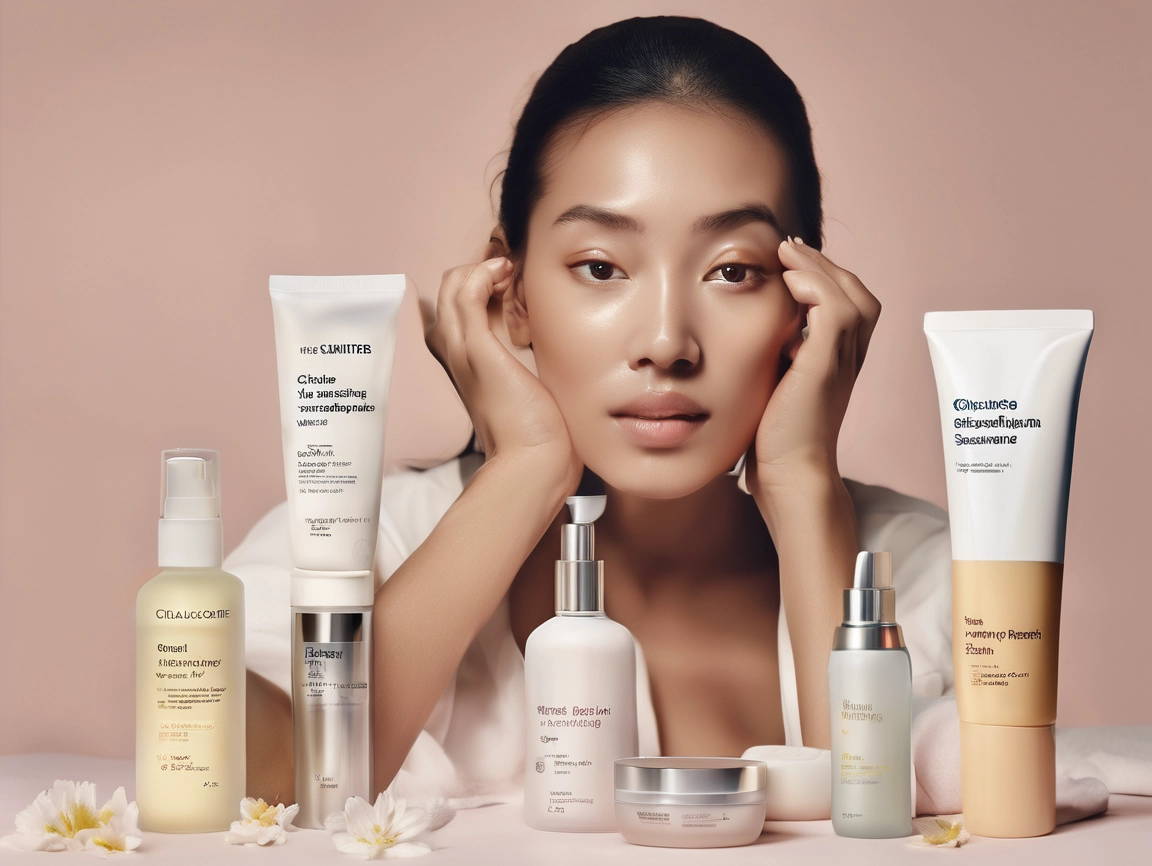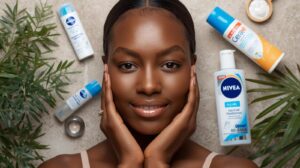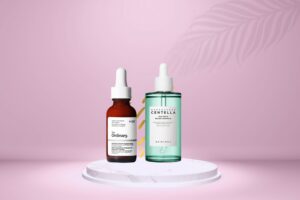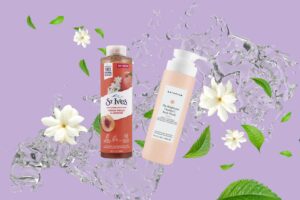Morning vs Evening Skincare: What Products to Use When and Why It Actually Matters
I used to slap the same products on my face morning and night without giving it much thought. Cleanser, toner, moisturizer – rinse and repeat, literally. Then I wondered why my expensive vitamin C serum wasn’t doing much and why my skin looked dull despite using a retinol every single day.
Turns out, your skin has different needs at different times of the day. What protects and energizes your skin in the morning can actually work against you at night, and vice versa. Once I figured out this timing thing, my skincare routine became way more effective – and I stopped wasting money on products that weren’t working because I was using them at the wrong time.
If you’ve been treating your morning and evening routines like identical twins, this guide will help you understand why timing matters and how to optimize both routines for better skin.
Why Your Skin Needs Different Care Morning vs Night
Your skin operates on a circadian rhythm just like the rest of your body. During the day, it’s in protection mode – defending against UV rays, pollution, and free radicals. At night, it shifts into repair mode, focusing on cell renewal and recovery from daily damage.
This isn’t just skincare marketing speak. Research published in the Journal of Investigative Dermatology shows that skin cell turnover peaks at night, while protective functions like sebum production and barrier function are highest during the day.
Morning priorities:
- Protection from environmental damage
- Hydration that works under makeup
- Antioxidant defense
- Sun protection
Evening priorities:
- Deep cleansing to remove daily buildup
- Repair and renewal treatments
- Rich hydration for overnight recovery
- Active ingredients that work best in darkness
The Morning Routine: Defense and Protection
Think of your morning routine as putting on armor for the day. Every product should either protect your skin or prep it to handle whatever the day throws at it.
Morning Cleansing: Gentle Wake-Up Call
Unless you have very oily skin or used heavy overnight treatments, morning cleansing should be gentler than your evening routine. Your skin hasn’t accumulated makeup, sunscreen, or environmental pollutants overnight.
Best approach: Use a gentle gel cleanser or even just splash with lukewarm water if your skin is on the dry side. If you used heavy oils or treatments the night before, a gentle foaming cleanser works well.
Skip this: Harsh scrubs, strong acids, or double cleansing in the morning – you’ll strip away beneficial oils your skin produced overnight.
Morning Treatments: Antioxidant Power
This is where vitamin C serums shine. Vitamin C works as an antioxidant, neutralizing free radicals from UV exposure and pollution before they can damage your skin. Studies show that vitamin C is most effective when applied before sun exposure.
Best morning actives:
- Vitamin C (L-ascorbic acid or stable derivatives)
- Niacinamide for oil control and pore appearance
- Hyaluronic acid for hydration
- Peptides for firmness
What to avoid: Retinoids, AHAs, or BHAs in high concentrations – these can increase sun sensitivity.
Morning Moisturizing: Lightweight and Layerable
Your morning moisturizer needs to play well with makeup and sunscreen. Heavy creams can pill under products or make your makeup slide off by noon.
Look for:
- Gel or lotion textures
- Fast-absorbing formulas
- Ingredients like hyaluronic acid and glycerin
- SPF integration (if you prefer combination products)
The Non-Negotiable: Sunscreen
This is where many people’s morning routines fall apart. You can have the perfect cleansing and treatment routine, but without daily SPF, you’re basically undoing all your anti-aging efforts.
Minimum SPF 30, broad-spectrum protection – this isn’t negotiable. The American Academy of Dermatology recommends reapplying every two hours, but let’s be honest – most of us aren’t doing that over makeup.
Solution: Look for setting powders or sprays with SPF for midday touch-ups, or choose a high SPF in the morning (SPF 50+) for longer protection.
The Evening Routine: Repair and Renewal
Your evening routine is where the magic happens. This is when you can use stronger actives, richer formulas, and treatments that need time to work without interference from makeup or sun exposure.
Evening Cleansing: The Deep Clean
After a full day of makeup, sunscreen, and environmental exposure, your skin needs a thorough cleanse. This is where double cleansing makes sense.
Step 1: Oil cleanser or micellar water to remove makeup and sunscreen Step 2: Water-based cleanser to clean your skin
This method, popular in Korean skincare routines, ensures you’re actually removing everything without over-scrubbing.
Evening Treatments: Time for the Heavy Hitters
Evening is when you can use ingredients that make your skin photosensitive or need uninterrupted time to work.
Retinoids and retinol: These vitamin A derivatives increase cell turnover and stimulate collagen production, but they can make your skin more sensitive to sun damage. Night use is essential.
AHA and BHA acids: Chemical exfoliants like glycolic acid (AHA) and salicylic acid (BHA) help remove dead skin cells and keep pores clear. They can increase sun sensitivity, making evening application safer.
Treatment order matters:
- Thinnest to thickest consistency
- Most active ingredients first (after cleansing)
- Hydrating layers next
- Occlusives (like face oils) last
Evening Moisturizing: Rich and Restorative
Night moisturizers can be richer and more occlusive since you don’t need to worry about makeup application or a greasy appearance.
Nighttime superstars:
- Ceramides to restore barrier function
- Peptides for overnight repair
- Heavier oils like rosehip or marula
- Sleeping masks for extra hydration
Product Timing: What Goes When and Why
Some ingredients work better at specific times, and others should never be used together. Here’s your cheat sheet:
Morning Only:
- Vitamin C: Most effective before sun exposure
- Sunscreen: Obviously
- Benzoyl peroxide: Can bleach pillowcases and works well under makeup
Evening Only:
- Retinoids: Increase sun sensitivity
- Strong AHAs/BHAs: Can make skin photosensitive
- Heavy oils: Too greasy for daytime wear
Either Time (But Not Both):
- Niacinamide: Great for morning oil control or evening repair
- Hyaluronic acid: Works anytime you need hydration
- Gentle BHAs: Low concentrations can work for AM spot treatment
The Combinations That Don’t Play Nice
Not all skincare ingredients are friends. Some combinations can cause irritation or cancel each other out.
Avoid mixing:
- Vitamin C + Retinol (use at different times)
- AHAs/BHAs + Retinol (too much exfoliation)
- Benzoyl peroxide + Retinol (very irritating together)
- Multiple acids at once (glycolic + salicylic, for example)
Safe combinations:
- Niacinamide + almost anything
- Hyaluronic acid + everything
- Vitamin C + sunscreen (actually beneficial)
Sample Routines for Different Skin Types
For Oily/Acne-Prone Skin:
Morning:
- Gentle foaming cleanser
- Niacinamide serum
- Lightweight, oil-free moisturizer with SPF
Evening:
- Oil cleanser (if wearing makeup/sunscreen)
- Foaming cleanser
- Salicylic acid treatment (2-3x per week)
- Retinol (alternate nights with acid)
- Gel moisturizer
For Dry/Mature Skin:
Morning:
- Gentle cream cleanser or water only
- Vitamin C serum
- Hyaluronic acid serum
- Rich moisturizer
- Sunscreen
Evening:
- Oil cleanser
- Cream cleanser
- Retinol (3-4x per week)
- Peptide serum
- Night cream or facial oil
For Sensitive Skin:
Morning:
- Gentle, fragrance-free cleanser
- Niacinamide (if tolerated)
- Ceramide moisturizer
- Mineral sunscreen
Evening:
- Micellar water
- Gentle cleanser
- Hydrating serum
- Rich, barrier-repair moisturizer
- Face oil (if needed)
Common Timing Mistakes That Sabotage Results
Using retinol in the morning: This makes your skin more sensitive to sun damage and reduces the effectiveness of the retinol itself.
Skipping morning cleansing: Even if you cleansed at night, your skin produces oil and sheds cells while you sleep. A gentle morning cleanse helps your other products absorb better.
Applying sunscreen over wet skin: Let your moisturizer fully absorb before applying SPF, or it won’t form an even protective layer.
Rushing between steps: Give each product 30-60 seconds to absorb before applying the next one, especially with active ingredients.
Building Your Personalized Schedule
Start simple and add complexity gradually. Your routine might look different from someone else’s, and that’s perfectly fine.
Week 1-2: Establish basic cleanse, moisturize, SPF routine Week 3-4: Add one treatment product (vitamin C or gentle retinol) Month 2: Consider adding acids or additional treatments Month 3+: Fine-tune timing and products based on results
Listen to your skin: If you’re experiencing irritation, scale back. If you’re not seeing results after 6-8 weeks, consider adjusting product concentration or timing.
Seasonal Adjustments: Your Routine Isn’t Set in Stone
Your skin’s needs change with the seasons, and your routine should adapt too.
Summer adjustments:
- Lighter morning moisturizers
- Higher SPF ratings
- More frequent acid exfoliation (from sun damage)
- Gel-based evening treatments
Winter modifications:
- Richer moisturizers both AM and PM
- Less frequent exfoliation
- Added facial oils for barrier protection
- Gentler cleansing
The Bottom Line: Consistency Over Perfection
The perfect routine that you do inconsistently will always lose to the good routine that you stick to every day. Focus on getting the basics right – morning protection, evening repair, and consistent timing.
Your skin will tell you what’s working. Less irritation, improved texture, and that “your skin but better” glow are all signs you’re on the right track.
Remember, skincare is a marathon, not a sprint. Give your new timing strategy at least 6-8 weeks before making major changes. Your future skin will thank you for the patience.



